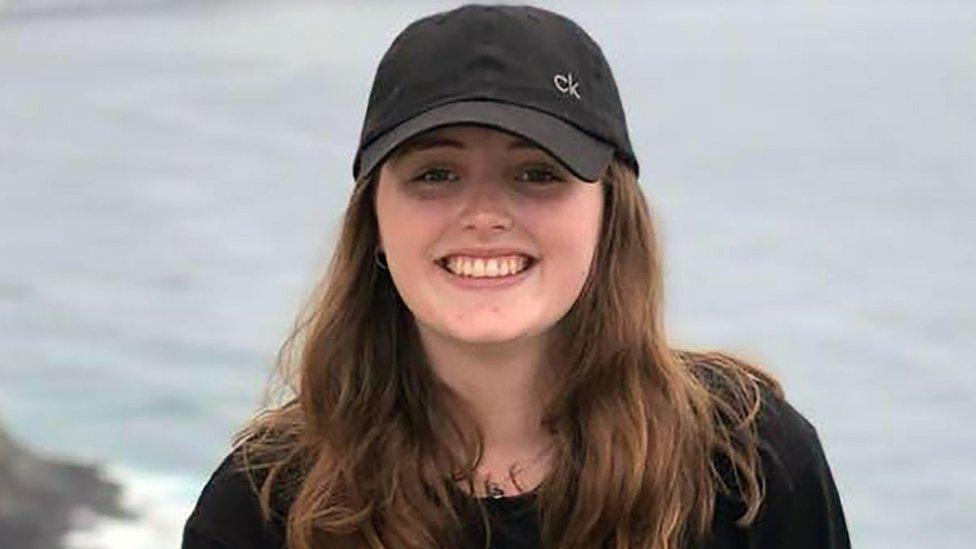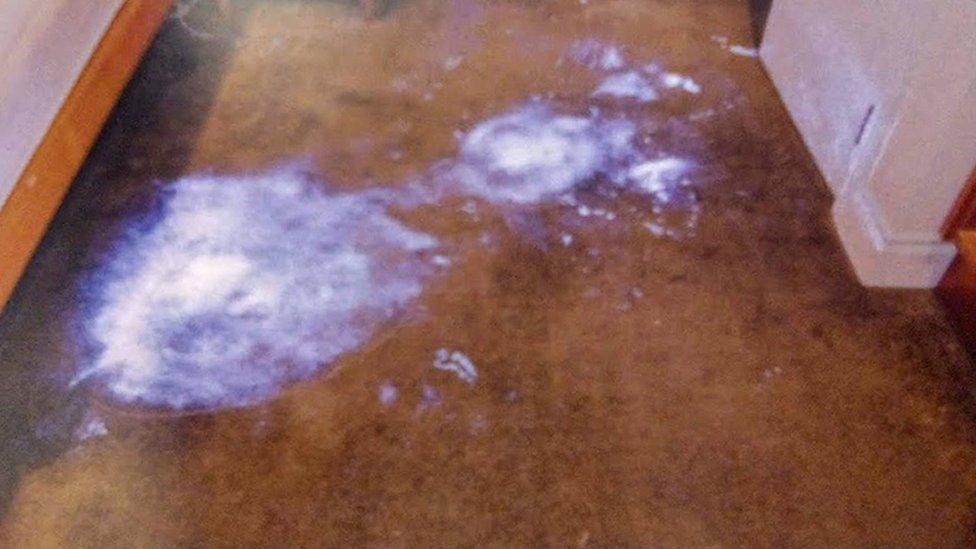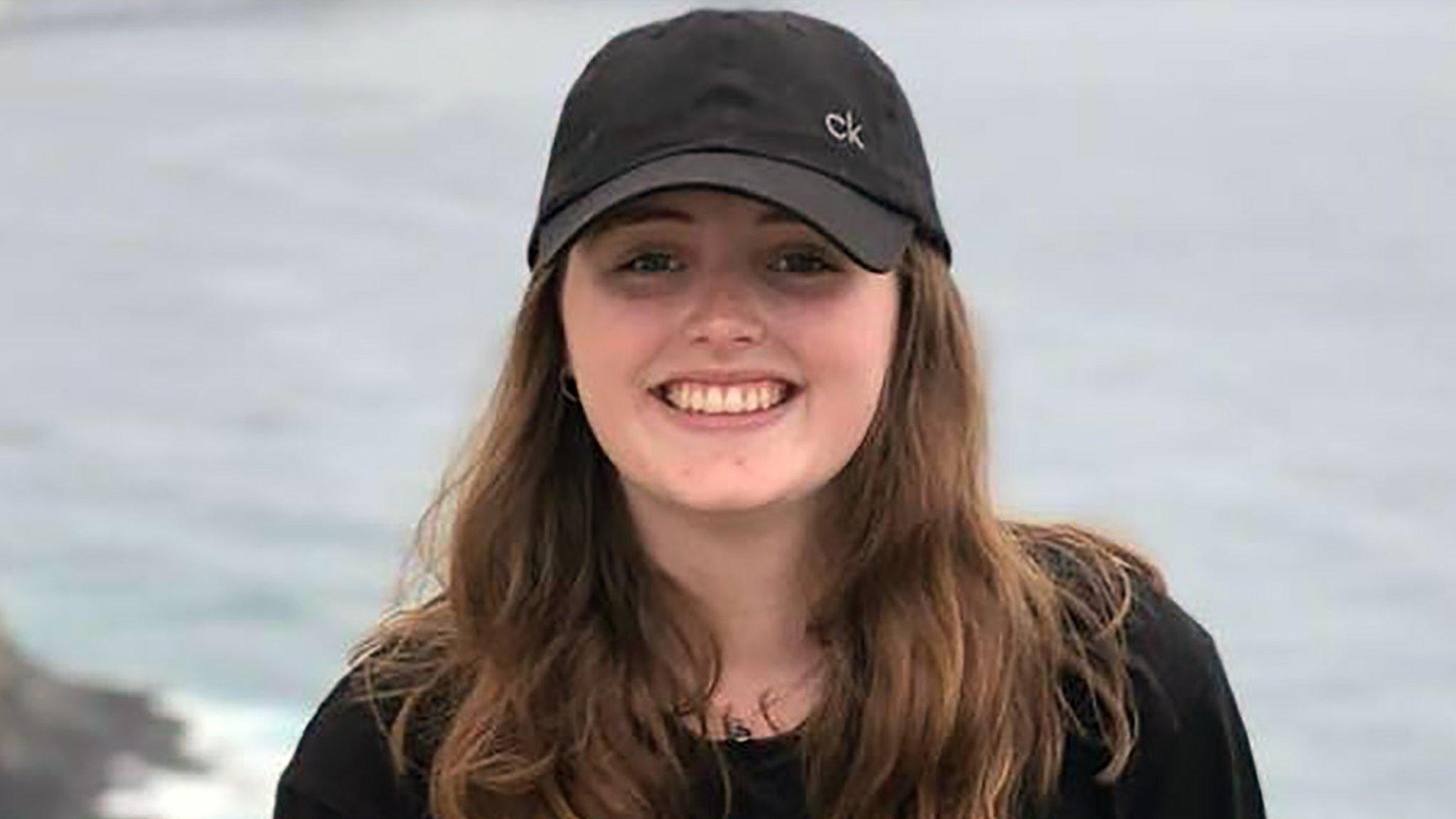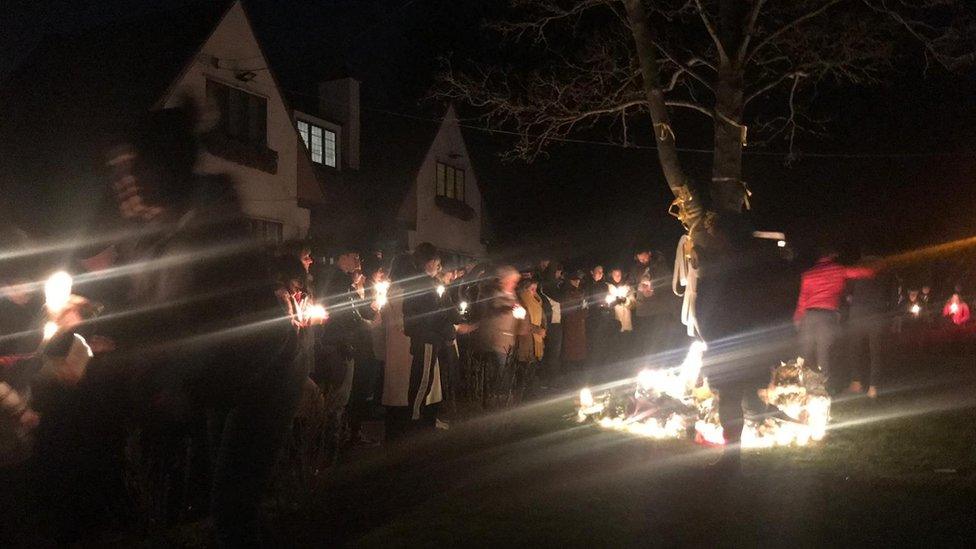Grace Millane trial: Suspect 'cleaned up blood' in apartment
- Published

Blood found in the apartment is "500,000 million times" more likely to belong to Ms Millane than anyone else
The suspect in the death of British backpacker Grace Millane attempted to clean up blood on the floor of the room where she died, a court in New Zealand heard on Friday.
Tests also revealed the blood was "500,000 million times more likely" to belong to Ms Millane than anyone else.
Prosecutors say Ms Millane, who was 22 and from Essex, was strangled after going on a date with the suspect.
He claims the death was an accident during consensual sex.
On Thursday, the court heard the suspect's phone was used to search for "flesh-eating birds" and the question "are there vultures in New Zealand?"
Other search terms included "the hottest fire" and "Waitakere Ranges" - the location that Ms Millane's body was eventually found in a suitcase.
The 27-year-old is not being named for legal reasons.

Luminol was used to highlight the alleged blood stains on the floor of the apartment
On Friday, the court heard there was evidence that attempts were made to clean up blood, which the defendant had already told police about.
Scientist Dianne Crenfeldt told the jury she had located two approximately circular probably blood stains between the accused's bed and a wardrobe.
"The shape of the probable blood staining and the presence of blood on the floor provided strong support that clean up of blood had occurred in this area," she said.
Another forensic scientist, Turlough Thomas-Stone, told the court that blood stains found on the suspect's fridge was "500,000 million times" more likely to belong to Ms Millane.
Luminol testing also showed that "somebody with blood on their feet moved around" the room.
A toxicologist said there was no sign of drugs in Ms Millane's body, but that her blood had 106 milligrams of alcohol per 100 millilitres of blood - more than double the legal limit for drivers in New Zealand.
But toxicologist Diana Kappatos said microbial action after death may have increased or decreased the concentration of alcohol in her body.

Why can't the suspect be named?
In New Zealand's court system, the accused and victims can ask to have their name suppressed, which means it becomes illegal to publish it in newspapers, online or anywhere else.
The purpose is to protect people not yet proven guilty - but also to have a fairer trial by ensuring the jury is not prejudiced by media coverage.
Images can also be withheld. When the main suspect in the Christchurch mosque attacks, Brenton Tarrant, appeared in court, the judge ordered the media to blur pictures of his face.

Ms Millane was last seen in Auckland on 1 December last year.
She had been on a trip around the world, travelling alone in New Zealand for two weeks.
She met the suspect on the dating app Tinder, and the pair were seen kissing and going to several bars in the city centre.
The defendant said the pair had engaged in rough sexual intercourse involving biting and hitting.
He told the police he then first fell asleep in the shower and later went to bed but discovered Ms Millane's body only the next morning.
"I woke up the next day and saw that she was lying on the floor," the defendant was quoted as saying. "I saw that she had blood coming from her nose."
- Published6 November 2019

- Published22 November 2019

- Published12 December 2018
